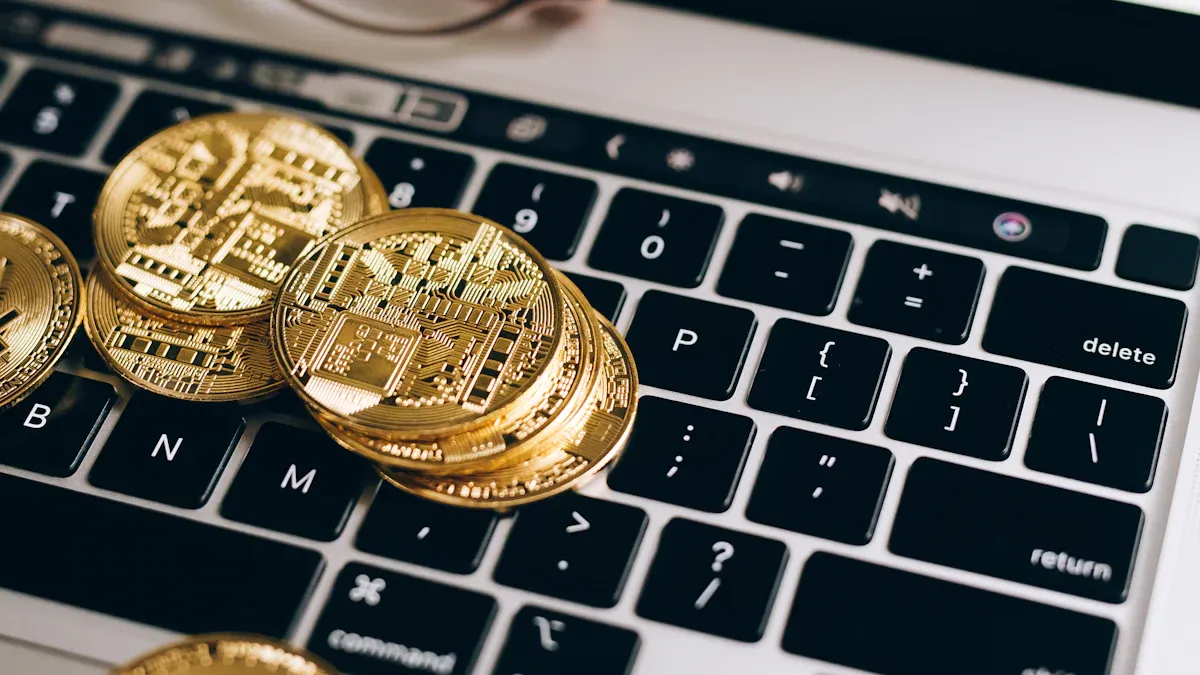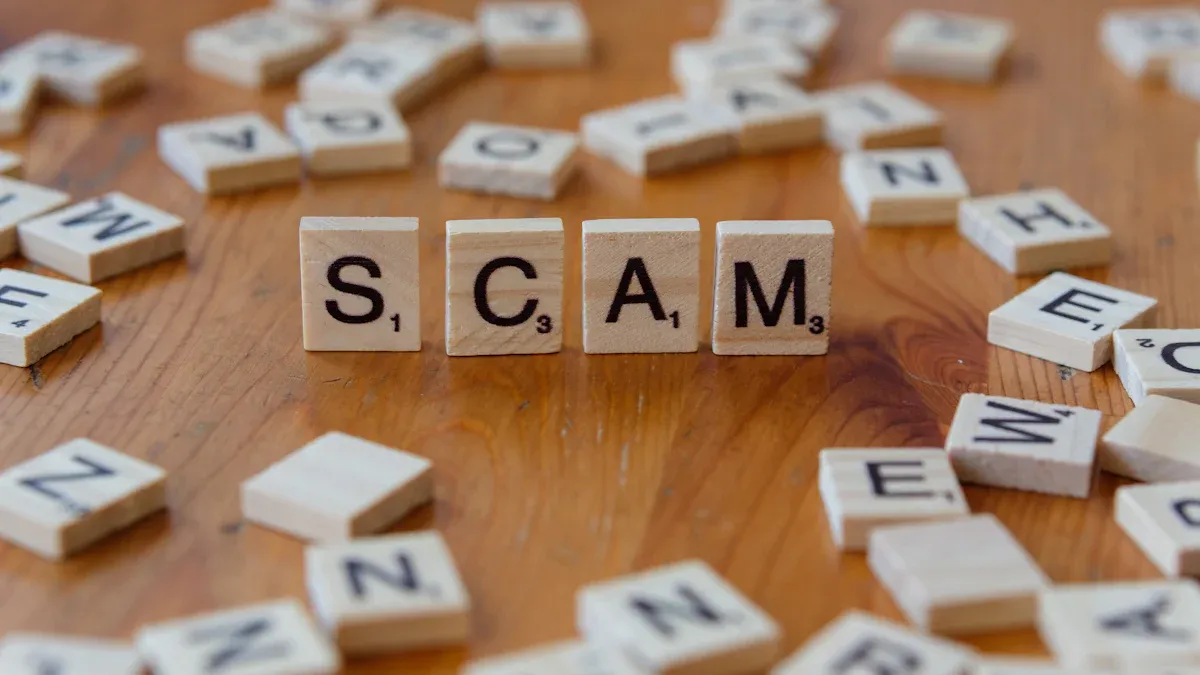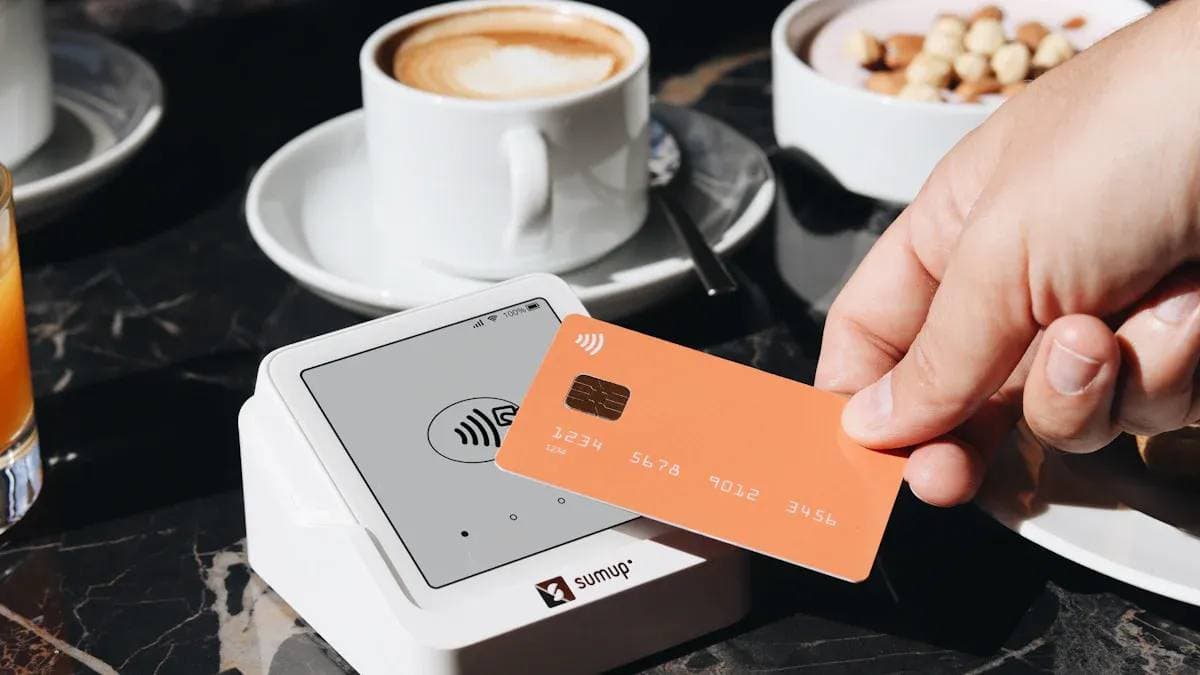- EasyCard
- Trade
- Help
- Announcement
- Academy
- SWIFT Code
- Iban Number
- Referral
- Customer Service
- Blog
- Creator
Stablecoin Remittance Pitfall Avoidance Guide: Common Traps and Solutions Q&A

Image Source: pexels
Do you want to use stablecoins (USDT) for remittances to avoid the approximately 6.62% high fees of traditional services? But you may also worry about the risks involved. Digital currency remittances are developing rapidly, and understanding how they work is crucial.
- By 2025, blockchain-based remittances are expected to account for 3-5% of global totals.
- The annual transfer volume of stablecoins has exceeded 27.6 trillion USD, showing their high activity.
The key to safe, low-cost remittances lies in: choosing reliable trading platforms, verifying counterparties, and using compliant withdrawal channels. This guide will provide you with a clear operation manual in Q&A format.
Key Points
- Stablecoin remittances are much cheaper than traditional bank wire transfers, especially suitable for small remittances.
- Choose the TRC-20 network for USDT transfers, with low fees and fast speed.
- Be careful of “black USDT” and P2P scams, choose major platforms and verified merchants, and verify receipts.
- Carefully check the address and network before transferring to avoid loss of funds.
- Use compliant third-party platforms for withdrawals to protect your bank account safety.
Stablecoin (USDT) Remittances: Cost Advantages and Network Selection

Image Source: pexels
When considering stablecoin (USDT) remittances, the most direct motivation may be cost. How significant is its advantage compared to traditional bank wire transfers? Let’s answer this with a clear comparison.
USDT Remittance vs Bank Wire Transfer Cost Comparison
The fee structure of traditional bank international wire transfers is complex, often including hidden costs you cannot see. The final fee for a remittance may consist of the following parts:
- Service fee: The fixed remittance handling fee charged by the bank.
- Correspondent bank fees: When funds pass through one or two intermediary banks, each charges a processing fee.
- Currency conversion fees: Banks add a spread to the real-time exchange rate when converting currencies to profit.
- Receiving bank fee: Some banks charge again for received international remittances.
In contrast, the cost structure of stablecoin (USDT) remittances is much simpler, mainly including network transfer fees, trading platform fees, and spreads when buying/selling USDT.
To make it more intuitive, assume remitting 1,000 USD:
| Fee Type | Bank Wire Transfer (Estimate) | USDT Remittance (Estimate) |
|---|---|---|
| Remittance Handling Fee | $20 - $45 | $0 |
| Intermediary/Correspondent Fee | $15 - $50 | $0 |
| Network/Miner Fee | $0 | $1 - $2 (using TRC-20) |
| Exchange/Spread Loss | 1% - 3% ($10 - $30) | 0.5% - 1% ($5 - $10) |
| Total Cost | $45 - $125 | $6 - $12 |
Tip: From the table above, the total cost of stablecoin (USDT) remittances is significantly lower than bank wire transfers, especially in small to medium remittance scenarios, where the cost advantage is very obvious.
Best Transfer Network (TRC-20/ERC-20) Selection
Choosing the right transfer network is a key step to control USDT remittance costs. The two most mainstream networks currently are TRC-20 (TRON network) and ERC-20 (Ethereum network).
- TRC-20: Known for low fees and fast confirmation times. A single transfer fee is usually between $1 and $2, and confirmation is completed within a few minutes.
- ERC-20: As the standard on the Ethereum network, its security is widely recognized, but fees are higher and easily affected by network congestion. Transaction fees may range from a few dollars to $15, or even higher during peak network times.
For most remittance needs, the TRC-20 network is the most cost-effective choice. Fortunately, almost all mainstream trading platforms now support both networks, allowing you to choose flexibly based on your needs. Additionally, other stablecoins like USDC and DAI can also be remittance options, usually efficiently exchangeable through decentralized platforms.
Core Risk Identification and Prevention

Image Source: unsplash
While enjoying the low costs and high efficiency of stablecoin (USDT) remittances, you must clearly recognize the hidden risks. Understanding these risks and learning prevention is a required course to ensure your fund safety.
“Black USDT” Risk and Account Freeze Prevention
“Black USDT” refers to illegally sourced USDT, such as from online gambling, scams, money laundering, and other criminal activities. When selling USDT through P2P transactions, if you receive such “dirty money,” your bank account may be frozen by judicial authorities.
Bank account freezes due to receiving illicit funds from P2P transactions are a common issue. Once your receiving account is linked to involved funds, even if you personally did not participate in any illegal activities, law enforcement may freeze your account for investigation. Although it can eventually be unfrozen, the process is very time-consuming and troublesome.
Important Tip: Do not think account freezes are far from you. The following are real judicial cases where bank accounts were frozen due to receiving illegal funds, reminding us to take fund source compliance seriously.
| Case Name | Date |
|---|---|
| Superintedent of Police vs Devaki Muthiah | April 15, 2019 |
| Superintendent of police vs shera f Irani | N/A |
| Tmt.T.Subbulakshmi vs The Commissioner Of Police | August 30, 2013 |
| J. Alice Mary vs The Inspector Of Police | July 3, 2007 |
| Uma Maheswari vs The State Rep. By | December 20, 2013 |
How to Prevent “Black USDT” Risks?
- Choose top trading platforms: Prioritize P2P transactions on reputable, strictly risk-controlled large exchanges.
- Screen counterparties: Trade as much as possible with “verified merchants” on the platform or users with good transaction history (such as high completion rates and long registration times). Avoid trading with suspicious or newly registered users.
- Use dedicated accounts: Set up a bank account specifically for cryptocurrency withdrawals, not mixed with your salary card, main savings card, etc., to isolate risks.
- Small, dispersed transactions: Avoid single large withdrawals, divide funds into multiple small transactions.
Common P2P Transaction Scams Analysis
Although P2P transactions are convenient, they also provide opportunities for scammers. Be alert to the following common scams:
- Forged payment proof: Scammers send you forged bank transfer screenshots or recordings, claiming payment has been made, and urge you to release USDT quickly. They may even send fake bank SMS notifications to confuse you.
- Revocable payments: Some scammers use payment tools with “revoke” functions. They apply to the payment platform to revoke the transfer immediately after completing the transaction, leaving you with neither money nor coins.
- "Middleman" scam: This is a more complex scam. The scammer communicates with both a buyer A and a seller B. He has buyer A send funds to seller B, then tells seller B that payment has been made, asking seller B to release USDT to his address. Ultimately, buyer A pays but receives no USDT, while seller B’s USDT is taken by the scammer.
Offline Transaction Warning: In offline cash transactions, be especially vigilant of “middleman” scams. If the other party claims a friend or colleague will handle the transaction, this is a strong danger signal. You must verify the other party’s username and transaction number on the P2P platform in person to ensure you are trading with the correct party.
How to Prevent P2P Scams?
- Verify arrival: Never release your USDT based solely on the other party’s screenshot or SMS notification. You must personally log into your bank account or e-wallet to confirm funds are “fully arrived” and “available,” not “in transit” or “processing.”
- Reject non-personal payments: Require the counterparty to use the same-name account certified on the trading platform for payment to reduce money laundering and fraud risks.
- Keep communication records: Conduct all communications within the trading platform’s chat window so the platform can intervene and retrieve evidence in case of disputes.
Consequences and Prevention of Transfer Operational Errors
A core feature of blockchain transactions is “irreversibility.” Once you send USDT to the wrong address or choose the wrong network, funds are likely permanently lost. The losses from such errors can be huge.
According to the FBI report, cryptocurrency-related fraud caused nearly 4 billion USD in investor losses in 2023 alone. Losses due to operational errors account for a significant portion. For example, a trader copied and pasted the wrong address and transferred out $843,000 and $1.75 million within three hours, totaling about $2.6 million in losses. Even worse, due to an “address poisoning” scam (scammers create an address very similar to your commonly used one), a trader lost assets worth nearly 70 million USD.
Can a wrong transfer be recovered?
Although difficult, there is still a glimmer of hope in certain situations:
- Contact the recipient: If you know who owns the wrong address (e.g., transferred to another exchange or friend), contact them to request a refund. But this depends entirely on the other party’s goodwill.
- Contact the platform: If you transferred from a centralized exchange to another account on the same platform, immediately contact customer service for help.
- Cancel pending transactions: If the transaction is still “pending,” some networks allow you to “accelerate” or “cancel” it by paying a higher fee.
How to Prevent Operational Errors from the Root?
- Repeatedly verify the address: Before clicking “send,” check the recipient address character by character. It is best to verify the first few and last few characters.
- Use address whitelist function: Most mainstream exchanges provide a “withdrawal address whitelist” function. Add commonly used, confirmed correct recipient addresses to the whitelist. After enabling this function, your account can only transfer to these pre-approved addresses, effectively preventing transfers to scammers due to copy errors or phishing attacks.
- Conduct small tests: Before large transfers, use a very small amount (e.g., $1 USDT) for testing. After confirming the test funds arrive successfully, perform the full transfer.
- Confirm transfer network: Ensure the transfer network you choose (e.g., TRC-20) exactly matches the network supported by the recipient address. Transferring to an incompatible network will also cause permanent asset loss.
Safe Operation Process and Compliance Notes
After mastering risk prevention knowledge, you need a clear, executable operation process to ensure every step is safe. At the same time, understanding related legal and tax regulations allows you to enjoy convenience while avoiding unnecessary troubles.
Step-by-Step Safe Remittance Guide
Follow these steps to greatly reduce risks in the stablecoin (USDT) remittance process.
- Account Preparation and Security Settings
- Complete identity verification (KYC): Choose a top exchange and complete the KYC (know your customer) process. The platform will require you to submit legal name, address, and other information. This is a legal requirement and the first step to protect your assets. Unverified accounts usually have extremely low withdrawal limits (e.g., daily $0), while verified accounts significantly increase withdrawal limits.
- Enable security tools: Immediately enable two-factor authentication (2FA), preferably using apps like Google Authenticator. Also set the platform’s “anti-phishing code,” which helps identify official emails and prevent account theft.
- Deposit and Purchase USDT Use platform-supported methods to buy USDT with fiat.
- Transfer USDT Refer to previous suggestions, carefully verify the address and network (recommend TRC-20), and conduct a small test.
- Safe Withdrawal—Convert USDT to Fiat This is the most critical link. To avoid P2P transaction “black money” risks, use a licensed third-party app as a “safe bridge.”
Operation Example: You can use an app like BiyaPay with licenses such as US MSB to convert USDT in your wallet to USD, then withdraw to your own Wise or Hong Kong licensed bank account. This process isolates your bank account from direct contact with P2P counterparties, greatly reducing risk control issues.
Legal Risks and Tax Reminders
The regulatory environment in the cryptocurrency field is changing rapidly, and you must stay informed.
- Legal Risks: Countries worldwide have varying attitudes toward cryptocurrency. For example, the Central Bank of Nigeria once banned financial institutions from handling cryptocurrency transactions, causing P2P trading volume to drop 43% at one point. The US is also advancing legislation like the Payment Stablecoin Act. Therefore, you must proactively understand the laws and regulations of the remitting and receiving countries to ensure compliant operations.
- Tax Reminders: Gains from cryptocurrency transactions need to be taxed. Taking IRS regulations in the US as an example, the following activities usually require reporting:
- Taxable: Selling USDT for fiat, using USDT to purchase goods or services.
- Usually not taxable: Buying USDT with fiat, transferring between your own wallets.
Important: If filing taxes in the US, use Form 8949 to calculate capital gains or losses and report on Schedule D. Be sure to keep all transaction records for accurate tax filing.
Stablecoin remittances do have advantages in cost and efficiency, but opportunities and risks coexist. Remember, your risk prevention awareness is more important than any technique, and “safety first” is the eternal principle.
Ultimate Pitfall Avoidance Advice
- Platforms and Counterparties: You should only trust top platforms and verified merchants.
- Verification and Checking: Repeatedly verify addresses before transferring, and confirm bank funds have arrived when receiving.
- Isolation and Compliance: You can use dedicated bank accounts or compliant third-party apps (such as licensed apps) for withdrawals to isolate risks, and proactively understand local regulations through official channels like IRS.
FAQ
Besides USDT, can I use other stablecoins for remittances?
Of course. You can also choose stablecoins like USDC or DAI. They are generally considered more transparent and widely supported by mainstream exchanges and wallets, making them reliable remittance alternatives.
How long does the entire remittance process take?
The entire process time consists of multiple links. Blockchain transfers themselves are fast, usually taking just a few minutes. But buying/selling stablecoins and final bank withdrawal processing may take from tens of minutes to several hours.
If the receiving bank asks about the fund source, how should I explain?
You should honestly state that the funds come from personal asset exchanges. Be sure to keep complete transaction records, such as withdrawal certificates from compliant platforms. This helps prove your fund source is legal and avoids unnecessary troubles.
Are there amount limits for stablecoin remittances?
Stablecoin transfers themselves have no upper limit. However, the trading platform you use will set daily withdrawal limits based on your identity verification (KYC) level. For large remittances, confirm the platform’s specific limits in advance.
*This article is provided for general information purposes and does not constitute legal, tax or other professional advice from BiyaPay or its subsidiaries and its affiliates, and it is not intended as a substitute for obtaining advice from a financial advisor or any other professional.
We make no representations, warranties or warranties, express or implied, as to the accuracy, completeness or timeliness of the contents of this publication.




Contact Us
Company and Team
BiyaPay Products
Customer Services
BIYA GLOBAL LLC is a licensed entity registered with the U.S. Securities and Exchange Commission (SEC No.: 802-127417); a certified member of the Financial Industry Regulatory Authority (FINRA) (Central Registration Depository CRD No.: 325027); regulated by the Financial Industry Regulatory Authority (FINRA) and the U.S. Securities and Exchange Commission (SEC).
BIYA GLOBAL LLC is registered with the Financial Crimes Enforcement Network (FinCEN), an agency under the U.S. Department of the Treasury, as a Money Services Business (MSB), with registration number 31000218637349, and regulated by the Financial Crimes Enforcement Network (FinCEN).
BIYA GLOBAL LIMITED is a registered Financial Service Provider (FSP) in New Zealand, with registration number FSP1007221, and is also a registered member of the Financial Services Complaints Limited (FSCL), an independent dispute resolution scheme in New Zealand.



















